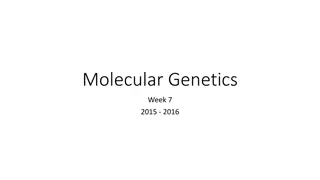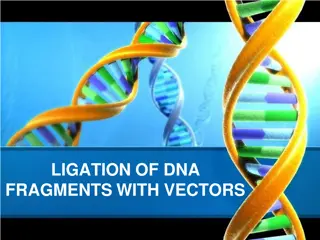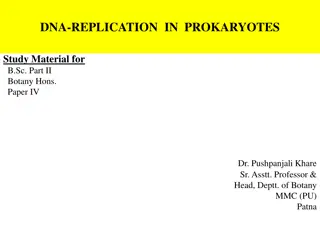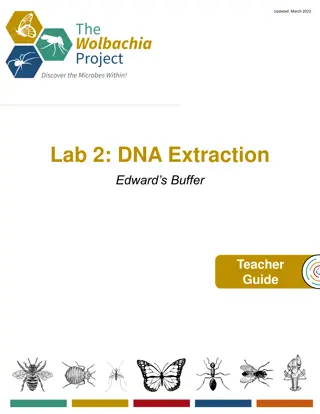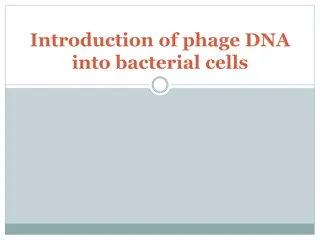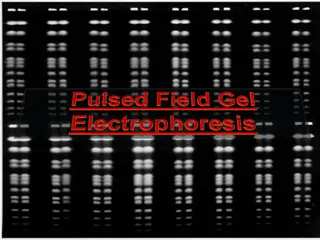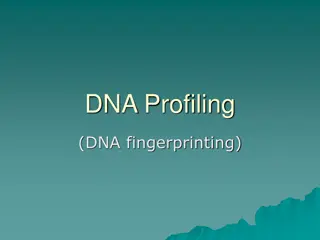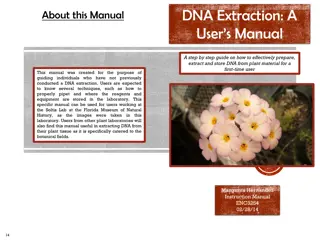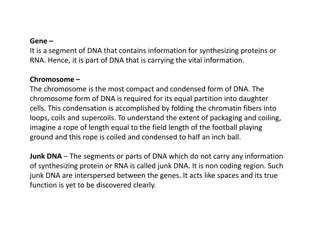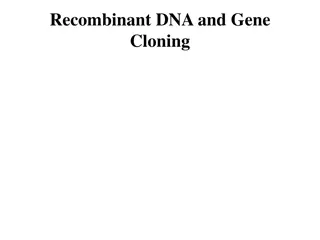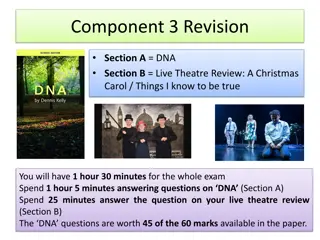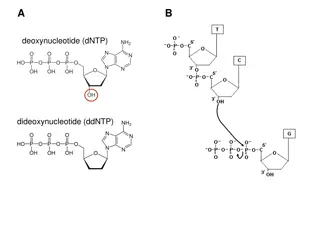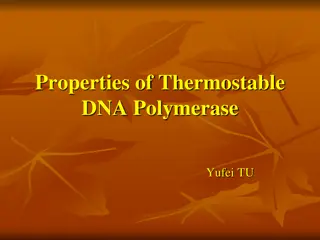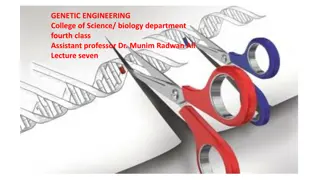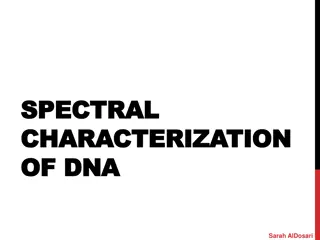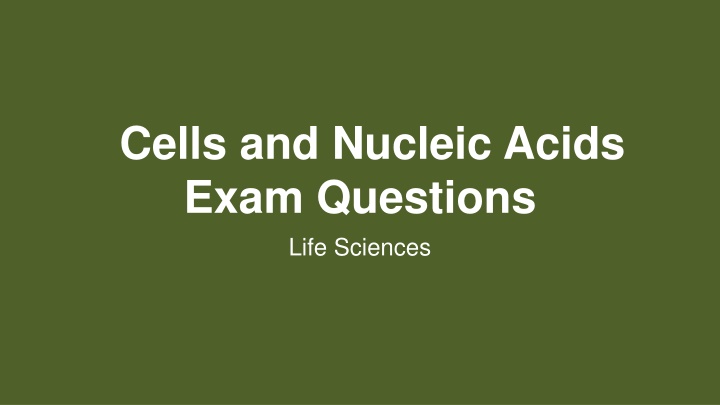
Nucleic Acids and Cells Exam Questions in Life Sciences
Dive into the world of nucleic acids and cells with these multiple-choice questions focusing on DNA molecules, replication, profiling, and biological terms in life sciences. Explore topics such as DNA structure, nitrogenous bases, DNA replication, and significance of DNA replication. Put your knowledge to the test and enhance your understanding of these fundamental concepts.
Download Presentation

Please find below an Image/Link to download the presentation.
The content on the website is provided AS IS for your information and personal use only. It may not be sold, licensed, or shared on other websites without obtaining consent from the author. If you encounter any issues during the download, it is possible that the publisher has removed the file from their server.
You are allowed to download the files provided on this website for personal or commercial use, subject to the condition that they are used lawfully. All files are the property of their respective owners.
The content on the website is provided AS IS for your information and personal use only. It may not be sold, licensed, or shared on other websites without obtaining consent from the author.
E N D
Presentation Transcript
Cells and Nucleic Acids Exam Questions Life Sciences
Life Sciences Multiple Choice Questions 1.1 1.1.1 In a DNA molecule A guanine pairs with adenine. B adenine pairs with thymine. C cytosine pairs with adenine. D guanine pairs with thymine. 1.1.2 A sample of DNA has 60 guanine bases and 30 adenine bases How many phosphate molecules would you expect in this sample of DNA? A 30 B C 180 D 90 270
A A T G G C C T A A G G C C A A T G G C C T A A
Life Sciences Questions 1.1.3 and 1.1.4 are based on the diagram below.
Life Sciences 1.1.3 The procedure shown above is called A cloning. B DNA replication. C DNA profiling. D fingerprinting. 1.1.4 The evidence in the diagram shows that A only Tom was present at the scene of the crime. B Tom and Joe were present at the scene of the crime. C only Joe was present at the scene of the crime. D none of the three individuals were at the scene of the crime.
Life Sciences Biological Terms 1.2 1.2.1 The process by which a DNA molecule makes identical copies of itself. 1.2.2 Nitrogenous base found only in RNA molecules. 1.2.3 A sugar molecule found in a nucleotide of DNA. 1.2.4 The phase in the cell cycle during which DNA replication occurs. 1.2.5 The bonds between two nitrogenous bases in a DNA-molecule. Match Columns 1.3 Indicate whether each of the statements in COLUMN I applies to A only, B only, both Aand B or none, next to the question number in the ANSWER BOOK.
Life Sciences COLUMN I COLUMN II 1.3.1 Credited with the discovery of the structure of the DNA molecule. A Watson B Crick 1.3.2 Location of DNA in a human cell. A Nucleus B Mitochondrion 1.3.3 Structure of RNA A Guanine pairs with Cytosine B Contains deoxyribose sugar 1.3.4 Significance of DNA replication A Produce identical daughter cells. B Produce identical DNA molecules
Life Sciences Section B 2.1.1 Identify the nucleic acid in the diagram above. (1) 2.1.2 Name ONE organelle in the cytoplasm of a human cell where this nucleic acid is found. (1) 2.1.3 Identify the structures marked X and Y in the diagram. (2)
Life Sciences Section B 2.2.1 Name the nucleic acid above (1) 2.2.2 Identify the labels V, W, X and Y. (4)
DNA Replication Unzip into two single strands
2.3 Describe the process of DNA replication. (6) Strand 1 Strand 2
2.3 DNA Replication Answer (6) With cell division - New cells require exact copies of the DNA as it is in the mother cell. Step 1: DNA unwinds, becomes ladder-shaped. Step 2: Weak H-bonds break, DNA molecule unzips. Step 3: Each strand forms a complementary strand for itself - Nucleotides attach G - C and A - T Step 4: Each strand becomes a double helix. The end result is TWO identical DNA molecules. Sometimes mistakes happen mutation
Life Sciences 2.4 Tabulate THREE structural differences between DNA and RNA. (7) DNA RNA Double strand Single strand Deoxyribose sugar Ribose sugar Thymine Thymine replaced by Uracil



